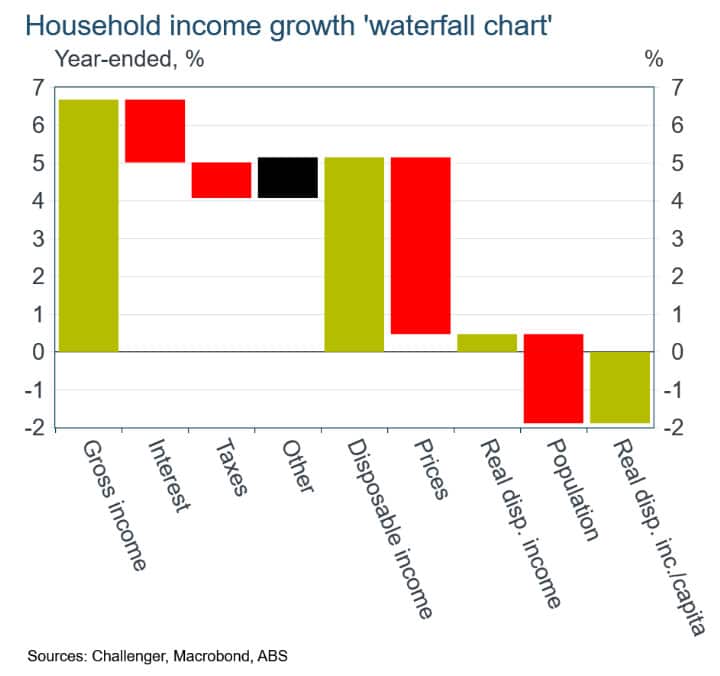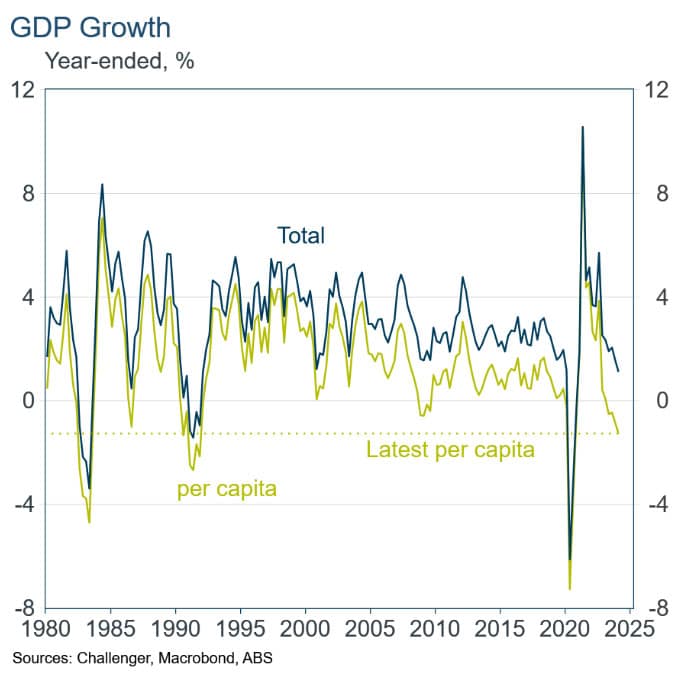
What is the true health of the Australian economy? Challenger Chief Economist Dr Jonathan Kearns suggests it may be uglier than the figures released yesterday suggest.
The (moderately) good news in data released on Wednesday was that the economy at least grew by 1.1% over the year, but that growth was just 0.1% in the March quarter. However, the true health of the economy is even more sombre than those headline figures suggest.
There has been a lot of focus on household incomes given the ‘cost-of-living crisis’. Aggregate household incomes over the year grew by 6.7% and after taking out increases in tax and interest payments, disposable income was a bit more than 5% higher over the year. But the big kicker was inflation which wiped out almost all of this nominal growth in disposable incomes. Population growth took off almost 2.5% leaving real household income per capita down 1.9%. It’s not surprising then that households are feeling morose.
Indeed, GDP growth per capita has experienced small falls in each of the past five quarters, and has declined by 1.3% over the past year. This is the worst outcome for decades outside of the pandemic and the early 1980s and early 1990s recessions. That’s the bad.
Also read: RBA Hiking Cycle Remains Unchanged Despite Inflation Warning
Looking across countries shows just how ugly the GDP per capita growth has been in Australia. Australian GDP per capita growth was lower than in all G7 economies, despite total GDP growth in Australia coming in pretty much in line with France, second behind the United States. This large gap between GDP growth and GDP per capita growth highlights the strong population growth in Australia over the past year (notably GDP per capita growth is higher than GDP growth in Italy, Japan and Germany where population fell over the year).




































